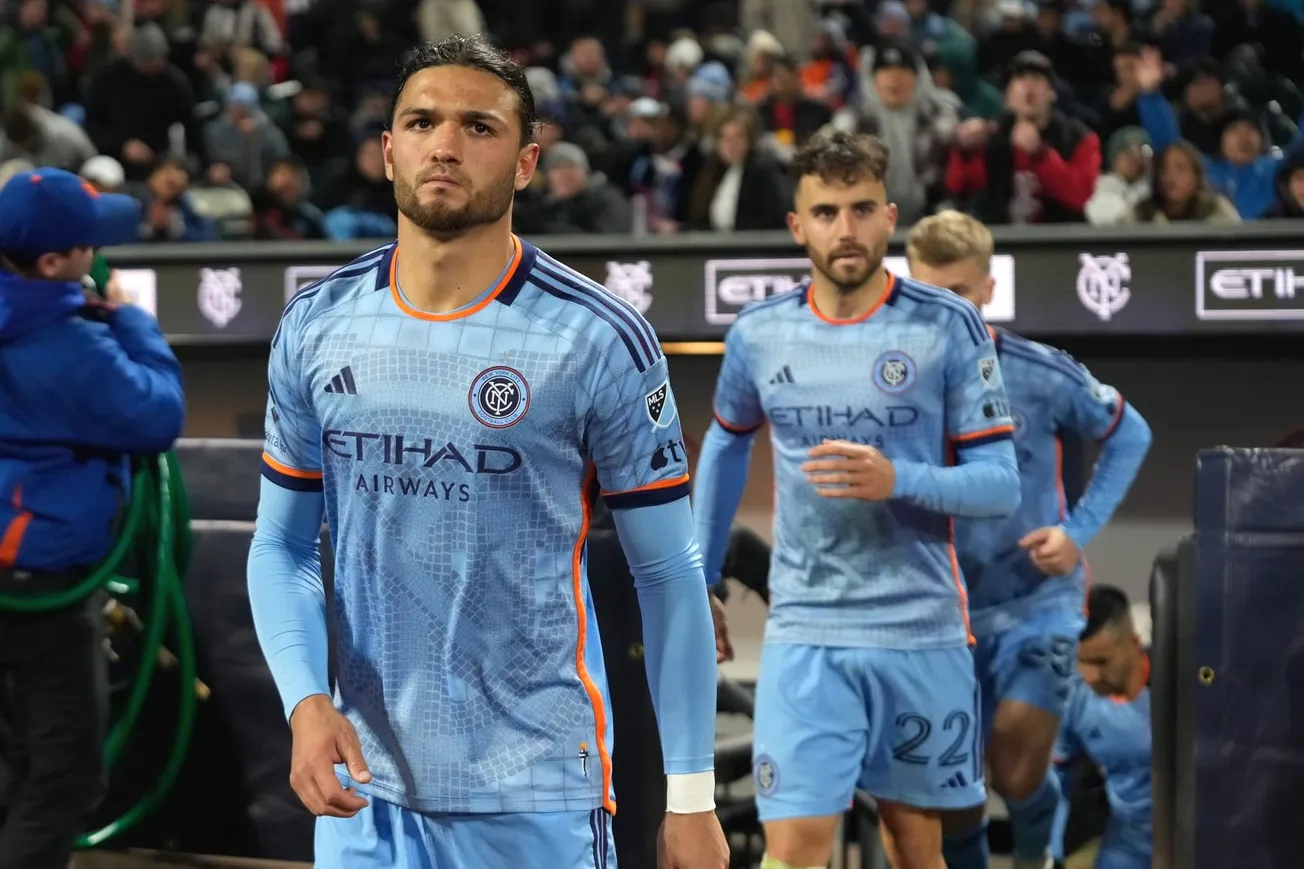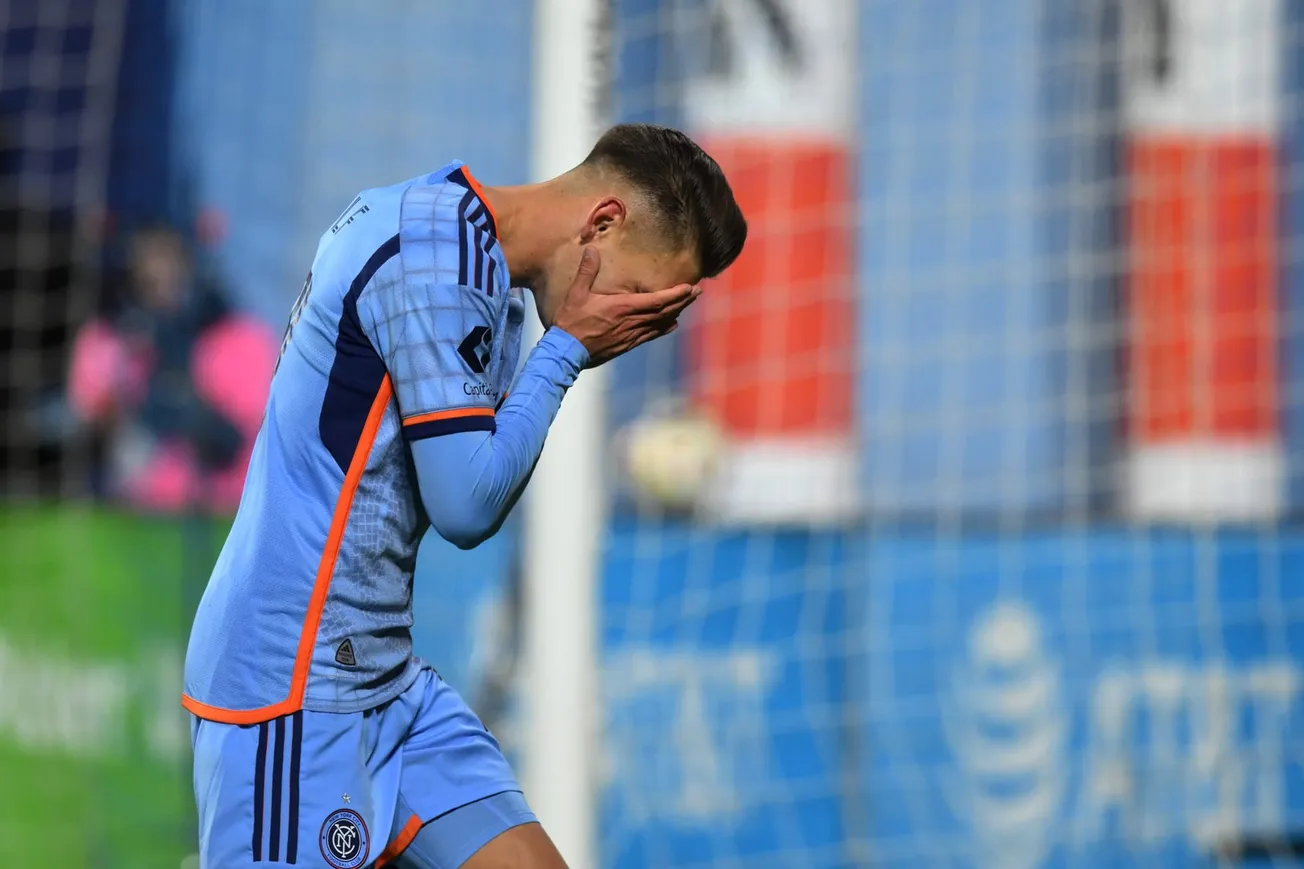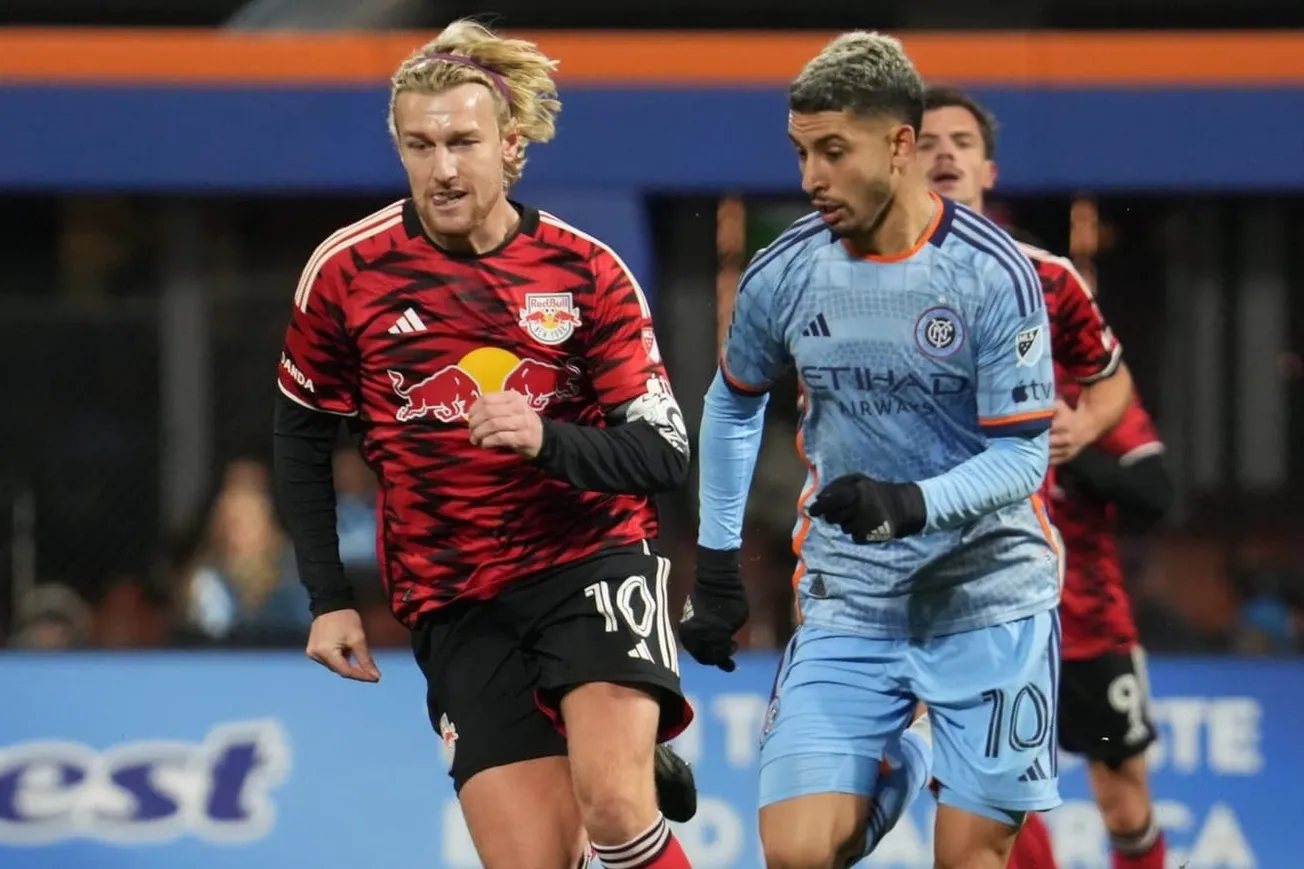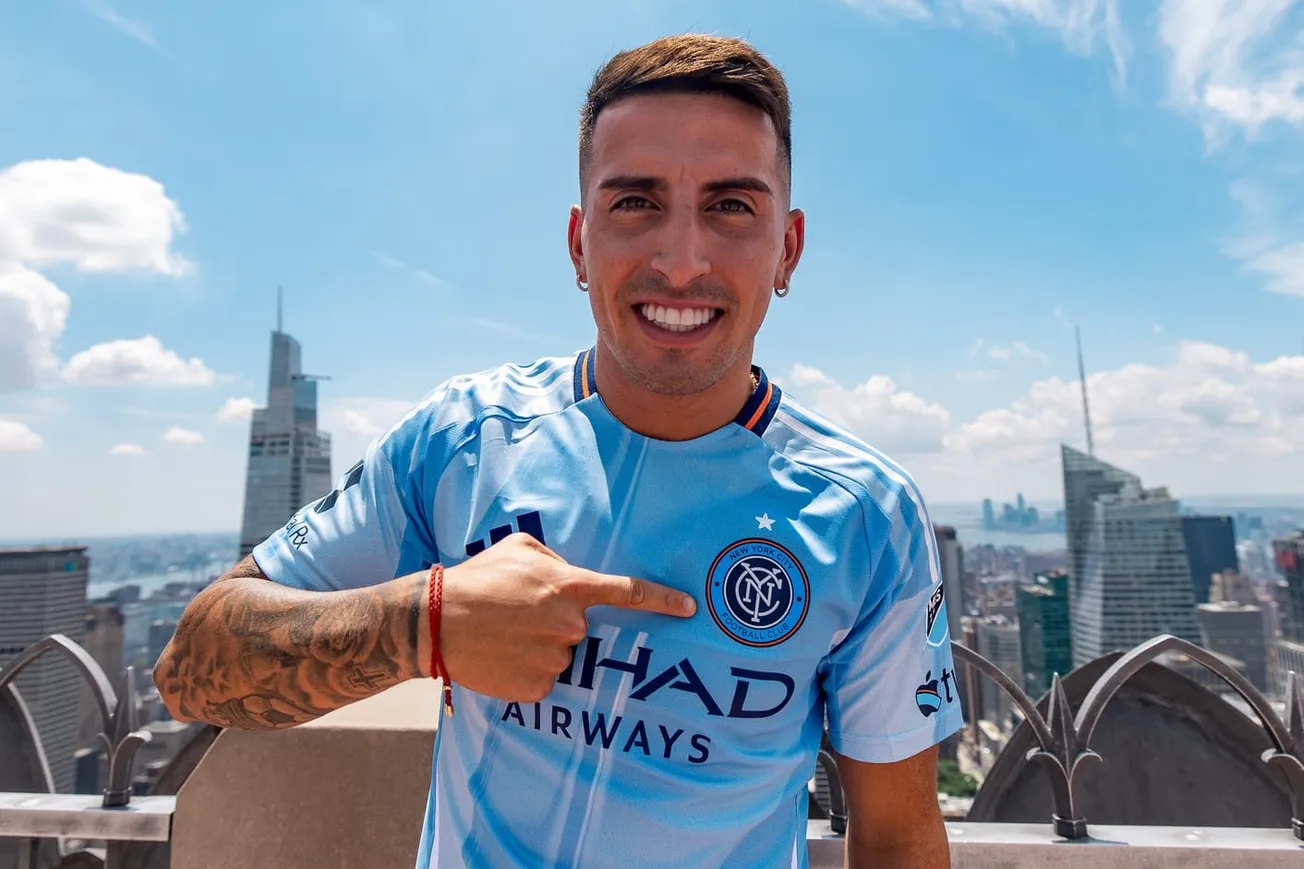Let’s do a playoff thing!
BMO Field will play host to the first-ever MLS Cup Playoff appearance for New York City FC Sunday. Toronto’s Reds are fresh off a comprehensive 3-1 victory over Philadelphia, and enter the contest on shorter rest. To get things all jacked up for the crack-up, we caught up with one of our favorite sparring partners from the SB Nation Soccer Family: Mr. James Grossi of the infamous Toronto FC blog known throughout the lands as Waking the Red.
Q.) The one-legged playoff against the Union was a very entertaining and well played match that Toronto deservedly won. I read a well-written piece on Walking the Red about the tinkering head coach Greg Vanney did with the lineup going into the game and the formation adjustment to the 3-5-2. I was wondering what everyone in Toronto was thinking going into the Union game after seeing the new formation the week before. How did it play out on the field, and what kind of advantages did it give the team against Philadelphia?
A.) The 3-5-2 has been something Vanney and the side have been playing with over the last two seasons. One novice reporter actually had the gall to ask Vanney, after it debuted in the friendly against Sunderland last year, if it was something that would be seen in the future.
Vanney, of course, answered no, only to trot it back out the next match, teaching the reporter (Hi!) a valuable lesson in the process.
Formations are what they are: a convenient short-hand to ease discussion of the game. But so much of how a particular set-up works depends on the actual roles given to each of the players in the system. And the best teams are able to flow between systems, depending on the current state of play and the match circumstance.
What the 3-5-2 does for Toronto therefore is give them options, while maximizing some of their assets and shoring up some weaknesses.
In attack, the use of wing-backs in Justin Morrow and Steven Beitashour gives TFC a little more width, while the extra centre-back allows the duo to take up more advanced positions, thereby pinning back the opponent’s wide threats. In doing so, it also creates more spaces for Sebastian Giovinco and Jozy Altidore, as wide defenders must be wary of the overlap, creating lanes for the two strikers.
On the other side of the ball, it puts strong defenders close to the ball carrier, meaning the first instance of pressure, in spaces of the pitch that are usually wide open for long runs, comes in less dangerous areas.
Against Philadelphia, their outside attackers – Chris Pontius and Fabian Herbers – found very little success going forward, in part because they had defensive duties to attend to, but also because they were not allowed to build up a head of steam en route to goal.
The back three also gives Toronto a measure of flexibility. Very few teams in MLS use a two-striker system, so having a leader like Drew Moor organizing, with athletic and quick defenders, in the form of Nick Hagglund and Eriq Zavaleta on either side, allows TFC to both double-team the lone front-man, while also stepping wide or up to pressure the ball should it make it’s way into the attacking areas.
This too was evident against Philadelphia, as CJ Sapong was forced deeper and deeper to get on the ball, occasionally dropping behind Tranqullo Barnetta, while Barnetta himself was either harried by Michael Bradley or interrupted by a good read from a centre-back – pressure on the ball comes from both directions.
Bradley, of course, is key to the whole system. Both as the metronome in the middle, dictating play and initiating attacks, but also covering acres of ground and snuffing out any dangers as it builds.
And with Armando Cooper, a ball-winner and build-up master, and Jonathan Osorio, who both links play and gets himself forward, Toronto has options: they can play up to Altidore, put a ball into space for Giovinco to chase, make use of the wing-back width, or just work methodically through the midfield towards the opponent’s box.
With so many ways to threaten, it becomes very difficult to pin them back for any length of time, or completely eliminate the threat of TFC finding a chance.
Q.) Despite being loaded with talent and finding success in both 2015 as a 6th seed and again this year as the 3rd seed, Toronto has found it difficult to play NYC FC. In fact, Toronto is yet to win a match against the Blues, losing twice and drawing three times. While this isn’t utter domination of one team by another by any means, it is enough to ask questions (and so I will). Why do you think Toronto struggles with playing New York CIty? What positions the team to be successful and buck the trend this Sunday?
A.) A fair question, though it’s not like either team has beaten the other 7-0 or anything like that.
Looking back over the previous five matches, the glaring factor has been Josh Saunders. There is no reason for it, but even Greg Vanney has been forced to remark that for some reason, the guy is just spectacular when he is playing TFC.
He takes a lot of heat from NYCFC fans, but when it comes to playing Toronto, the guy is lights out.
Added to that, Toronto has never really faced the same version of NYCFC twice. Every time there has been something a little different. Whether it’s personnel or formation, New York has managed to throw a monkey wrench into whatever plans TFC may have laid out for the match. Toronto is a team that game plans well, they are prepared for their opponent, but NYC have managed, whether intentional or by pure happenstance, to have curve balls at the ready.
Another factor to consider is that TFC is a team that takes a little time to warm up, their starts have not been the best this season. The number of chances they waste before finding the back of the net is disconcerting.
When that happens, it is only a matter of time before a chance is presented to the other side, such is the nature of the game. NYCFC has the calibre of finishers – or at least one, his name is David Villa – that one chance is all they need to take the lead.
If one looks over the win and draw rates for the team that scores first in MLS, it can be such a huge factor that the record between these two teams comes as little surprise. NYCFC have scored first in each of the five encounters.
As for Sunday, well, Toronto will know all that has been recounted here. They will know the first goal is key, they will know New York will have a trick or two up their sleeve, and they will be eager to rattle Saunders with some early attempts.
And after all, knowing is half the battle.
Q.) These 180 minute affairs can be decided by very narrow margins on the pitch and off. Where do you think Toronto has the advantage over NYC? What must Toronto do as a team if they hope to be successful and what aspect of NYC FC’s game must they stop if they are to advance to the Eastern Final?
A.) Margins in these series are indeed slim.
There are many things that could see Toronto get the better of NYCFC in this situation, but, in the name of keeping it simple, one word will suffice: defence.
These matches can be cagey affairs. Thus far in the knockout round of the playoffs there have been a lot of high scoring matches, but the game between Seattle and Sporting KC was perhaps more instructional on what one should expect to see in the chase for the MLS Cup.
NYCFC have thrived, some would argued survived, because they have managed to score one goal more than their opponents. That is a tactic that carries with it significant risk.
What if the goals dry up? What if the opponent is just as potent at finding the back of the net as you are? And what if they’re just a little better at not letting them in?
Last season Toronto was a run and gun team, daring the opponent to try and score more than Giovinco and company could put together. It made for an entertaining season, but when progression depends on keeping them out at the other end, they faltered. A fate that could await New York.
NYC managed to score 62 goals this season (TFC had 58 last year), while conceding 57 (TFC allowed 58 last year). TFC’s production dipped this year with just 51 goals, but they allowed just 39.
That difference creates a margin of error. NYCFC has no such margin.
Stating the obvious: the winner of this series will be the team that allows the fewest goals.
Lineup and Starting XI?
Lineup:
Clint Irwin; (3-5-2, from right to left) – Nick Hagglund, Drew Moor, Eriq Zavaleta; Steven Beitashour, Armando Cooper, Michael Bradley, Jonathan Osorio, Justin Morrow; Jozy Altidore, Sebastian Giovinco
Prediction:
2-0 TFC
Expect Toronto to come quick out of the gates. New York will be ready for them, fending off the first few chances, but Toronto will grab a goal inside the opening half-hour. They will add a second either just before half-time, or shortly after the restart, then NYCFC will opt to shut the game down and take the series back to their home ground.








